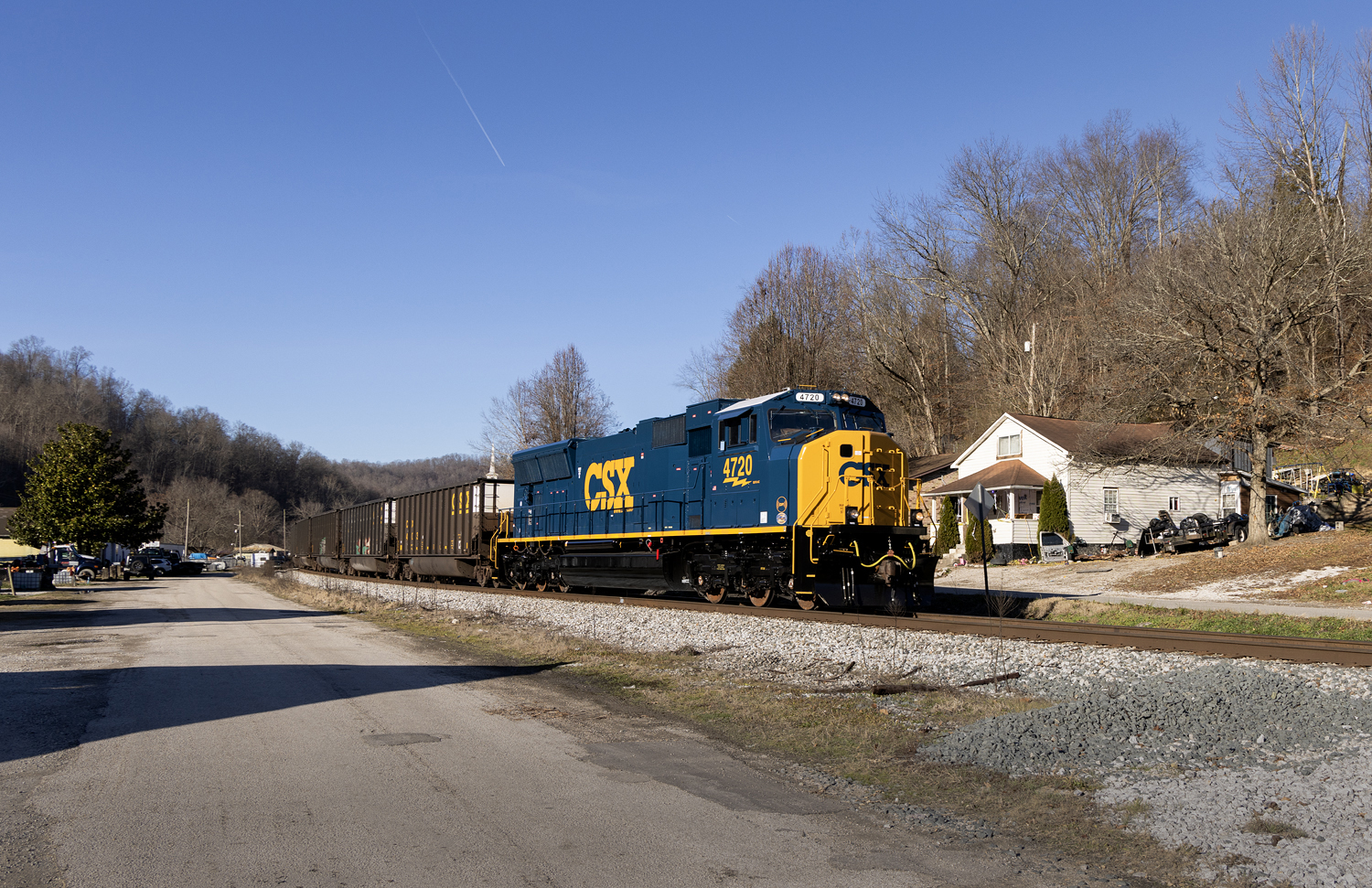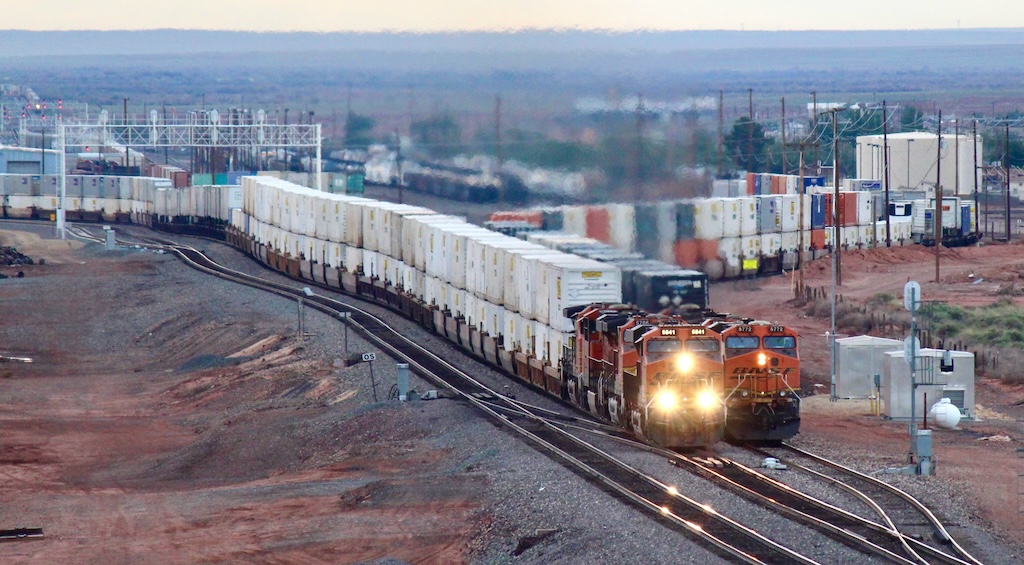Peter Schierloh, Sun Prairie, Wis.
O. Winston Link’s “The Last Steam Railroad in America” is always within arm’s reach.
Henry A. Jewell, Great Meadows, N.J.
Ayn Rand’s “Atlas Shrugged” explains how a railroad should be run – what kinds of people, attitudes, materials, and service breed success. And, it’s a great story!
Mark Nordling, Eden Prairie, Minn.
With Jim Boyd’s “Illinois Central – Monday Morning Rails,” Boyd displays a remarkable awareness of his surroundings and being completely in tune with them throughout his epic journey.
Bryan McCarty, Fort Worth, Texas
David P. Morgan’s “Locomotive 4501” told us once and for all that good railroad men are stubborn, obstinate, demanding, and have the biggest hearts in all of humanity.
Martin Whitehurst, Burlington, N.C.
Richard Gladulick’s “By Rails to the Boardwalk” is about the P-RSL in South Jersey. Just as the Reading and PRR competed for business, now the passenger and freight lines are doing the same.
Louis Fols, Simi Valley, Calif.
Paul Pietrak’s “Buffalo, Rochester & Pittsburgh Railway” tells of the BR&P under its own identity, and what a marvelous railroad it was: neat, sturdy, well-run – coal traffic in abundance, general freight of all kinds, and some of the nicest-looking thru-passenger trains one could imagine.
Jim Young, Martinez, Ga.
Lucius Beebe’s “Mixed Train Daily” is my all-time favorite, and has my vote as one of the best railroad books of all time.
Bill Redemske, North Tonawanda, N.Y.
The great story, “The Men Who Loved Trains,” by Rush Loving, is well written and a wonderful insight into how railfans can make great rail execs.
Al DiCenso, Annapolis, Md.
Seeing pictures of vintage steam, especially close to home, makes John Rehor’s “The Berkshire Era” my favorite book.
John Schon, Akron, Ohio
The well-written history of the Long Island Railroad, “Steel Rails to the Sunrise” by Ron Ziel and George Foster, is my favorite and stand out above the rest.
Joseph J. Huttle, Hicksville, N.Y.
My ultimate favorite is Andrew J. Pavlucik’s “The New Haven Railroad: A Fond Look Back,” because the New Haven was the first railroad in my life.
Dennis A. Livesey, New York, N.Y.
“The Mohawk That Refused to Abdicate and Other Tales” is my favorite – Morgan/Hastings – the Best of the Best!
Capt. A. D. Saleker, USN (Ret.)
Winter Springs, Fla.
Jim Shaughnessy’s “The Rutland Road” has rich text, superb photography, and appendices that leave few stones unturned.
Bruce Curry, Ottawa, Ont.
The one I “devoured” the most was Louie Hunt’s “The Silverton Train.” It was filled with detailed information about abandoned lines, discontinuance of the San Juan passenger train and the Rio Grande Southern – all the stuff I wanted to know a lot more about.
Michael M. Bartels, Lincoln, Neb.
The book that I feel is the best railroad history ever published goes to Don Hofsommer’s “The Quannah Route.”
Scott Yaeger, Sugar Land, Texas
A must read for anyone wanting to know how railroads have evolved in the U.S. is Albro Martin’s “Enterprise Denied: Origins of the Decline of American Railroads, 1897-1917.”
Glen Brewer, Denver, Colo.
My favorite railroad book of all times is “The Lincoln Land Traction” by James D. Johnson, as it was my favorite railroad as a child.
Skip Gatermann, St. Louis, Mo.
Frederick W. Hyde’s “The Milwaukee Road” is my favorite railroad book. The way Hyde describes the Aberdeen Division is nothing short of magic.
Chad M. Pfitzer, Washington, Ind.
My favorite book, “Pennsy Power,” was given to my father and I by the author, Bert Pennypacker. They were members of the same railroad club. This book represents all of those shared memories of monthly gatherings, trading negatives, showing slides, or waiting for some special train to show up with those friends.
Bruce Broomfield, French Camp, Miss.
In Harry J. Briscoe’s “Watching the Trains Go By . . . A Narrative of a Santa Fe Railway Man,” Mr. Briscoe gives the reader such an insight to his work in each location, and in that way the reader learns so much about how a railroad operates. It was fascinating as well as educational.
Phil Miller, Matfield Green, Kan.
“Mixed Train Daily,” by Lucius Beebe, is at the top of the list of books I like. It captured the full flavor of that marvelous era of the short-line mixed train, usually consisting of a steam locomotive, a few freight cars and a passenger coach or combination car and sometimes a caboose.
James D. Sheppard, Greenville, S.C.
My favorite railroad book is August Derleth’s “The Milwaukee Road: It’s First Hundred Years.” I especially liked the history in the appendix listing the line segments as they were installed, and as they were dismantled.
Michael J. Paul, Green Valley, Ariz.
David Plowden’s description of his cab ride in “A Time of Trains” still thrills me whenever I read it. It is the best train ride story I have ever read, and the black and white photography is spectacular.
Ed McDonnell, Rochester, N.Y.
I like Michael Koch’s “Steam and Thunder in the Timber” for its state-by-state coverage of major logging operations.
Bob McClain, Canton, Ohio
Warren W. Wing’s “A Northwest Rail Pictorial” is a wonderful collection of photos concentrating on railroading in Washington State.
David Tritenbach, Kerrville, Texas
Edmund G. Love’s “The Situation in Flushing” is personal, humorous, and captures the important role of the railroad during a different era in our country.
Bill Boyd, Northbrook, Ill.
“The Love of Trains” by Victor Hand and Harold Edmonson has had the deepest impact on me, and is the foundation of my deep fascination for American railroading.
Matt Vaversund, Stockholm, Sweden
“The New Haven Railroad: A Fond Look Back” by Andrew Pavlucik has to be one of the best books about the railroaders (you know, the people who actually run the machines, and NOT the other way around) who helped give the New Haven it’s unique character, and breathed life into that once-great, complicated assemblage of steel, steam, copper, and diesel fuel.
Dana Hunt
Conductor, Naugatuck Railroad
Thomaston, Conn.
My favorite book would have to be John R. Signor’s “Donner Pass: SP’s Sierra Crossing,” that I received from my grandmother at 18 years old. She was well aware of my passion for Donner Pass, skiing, and the SP. Armed with that book, a video camera and my first four-wheel drive vehicle, the adventure began. I began reading the book trackside while waiting for trains. As the rich history of the Central and Southern Pacific was sinking in, it dawned on me that I also held a treasure map in my hands.
John E. Kistner, Sacramento, Calif.
Greg McDonnell has outdone himself with “Canadian Pacific Stand Fast, Craigellachie!,” an excellent publication with maps, historical and current information, and some of the finest photos taken of this great railroad.
Lloyd de Zeeuw, London, Ont.
Number One for me is “Farewell to Steam,” by David Plowden. It has a spirit and compassion not found in other books of its era.
John Fasulo, Beacon, N.Y.
“Steam’s Camelot” by Jim Wrinn will always carry a place of honor in my train library. Most of the engines in the book I saw come through my hometown of Bremen.
Richard Driver, Bowdon, Ga.
Ron Ziel’s “Twilight of Steam Locomotives” has long been my favorite railroading book because it was written without the filler and fluff of some other books of the day and it told it like it was: steam is dead (but not forgotten!) – long live steam!
Vince LiBrizzi, Charlotte, N.C.
Mechanical Volunteer
North Carolina Transportation Museum
Greg McDonnell’s “Signatures in Steel” inspired me to be a railfan and photographer. His words and his prose are unmatched in his passion for Canadian railroading and railroading in general.
Curt Wakeman, Winnipeg
The biography of Oscar P. Orr, a Pennsyvania RR engineer, “Set Up Running,” by his son, John Orr, is the best first-hand account of how it was working on the railroad in steam days. The book is extremely detailed and absolutely fascinating.
Carl Lehman, San Antonio, Texas
Don Ball’s “America,s Colorful Railroads” deals with the steam-diesel transition era which I enjoy the most. I am 75 and lived thru this part of railroading.
Arman Balk, Rockford, Mich.
“Norfolk Southern Railroad, Old Dominion Line, and Connections” by Richard E. Prince is second only to the family Bible.
Bill Sellers, Gainesville, Ga.
“Meet Me at the Station” and “Faces & Places Along the Railway” by Elizabeth Willmot, deal with Ontario railroads, stations, sites, and the people that make the railway. Both books are like comfort food to me.
Jeffrey Jacobsen, Collegeville, Pa.
“Giants of the Rails” by S. Kip Farrington was the first railroad book I ever had. It contains line drawings of all kinds of steam and a Santa Fe EMD FT, along with explaining to children what railroads were all about. This had much to do with me becoming a railfan.
Alan Miller, San Diego, Calif.
In “The Mohawk That Refused to Abdicate and Other Tales” by David P. Morgan and Philip Hastings, the consummate railroad writer and the consummate railroad photographer documented the rapidly-disappearing North American steam era, and by often taking a step or two back from the tracks, a whole disappearing world.
Oren B. Helbok, Unityville, Pa.
With “The Wreck of the Penn Central” by Joseph R. Daughen and Peter Binzen
I can relive some of the ‘old days’ on the railroad through some of the passages. I was always a railfan, this book and those that followed have made me an informed rail fan.
Ron Hull, Homer Glen, Ill.
James Goforth’s “Chief Engineer for the Clinchfield” has lots of rail history and black and white photographs.
Jack Usher, Deland, Fla.
The books I refer to most often are Richard P. Bessette’s “Rods Down and Fires Dropped” and John Stover’s “History of the Illinois Central Railroad.”
Robert McMillan, Jacksonville, Fla.
Lucius Beebe’s “20th Century” describes the history of New York Central’s crack streamliner. I always appreciate Mr. Beebe’s flamboyant description of his subject matter.
B. F. Alabastro, Ilion, N.Y.
As a 12-year-old Santa Fe fan in the early sixties, “Santa Fe … Steel Rails Through California” by Donald Duke and Stan Kistler, truly inspired me!
James Hogenson, Fresno, Calif.
Fred Lee’s “Casey Jones” is the true story of John Luther Jones, the greatest hogger who could get maximum performance out of an engine.
James Weaver, Roxbury, Conn.
“My Life on Mountain Railroads” by William John Gilbert Gould is unique in importing the flavor of what it was really like being a railroader in the 1900-1940 era, and I lived 20 years within hearing and visual distance of the properties described.
David Johnson, Severna Park, Md.
My choice has to be “Portrait of the Rails” by Don Ball, Jr. It covers almost all worthwhile machines that hat the American scene and has always inspired me.
Kenneth Oates
Selby, North Yorkshire, England
Brian Fawcett’s “Railways of the Andes” and a very close second tie between: “Tales of the Glasgow and South Western Railway” and “Legends of the Glasgow and South
Western Railway” by David L Smith. I rank these books highly because they include the human element. Among the nuts and bolts of railroading there are people with all
their strengths and weaknesses, their humour, and their tragedy.
Bill Cowan
Dunedin, Otago, New Zealand
With the book, “Rising From the Rails, Pullman Porters and the Making of the Black Middle Class,” Larry Tye tells a historically important story seldom if ever seen in rail fan publications and as such should be required reading. Pullman porters, African Americans, performed a critical railroad job (trains would not run without them) for more than a century in spite of overt racism and demeaning, if not outright, dangerous working conditions. Their struggle and sacrifice for racial equality, labor union representation, and a thriving black middle class are rightfully a source of both pain and pride for all Pullman porters.
Rudolph P. Zwetzig, Wheaton, Ill.













